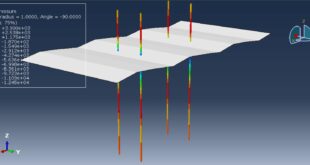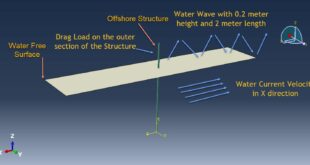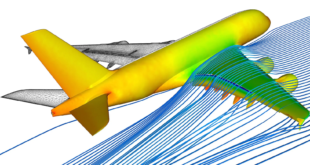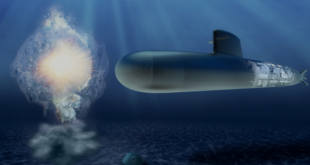In this tutorial Masonry wall behavior under couple Eulerian-Lagrangian explosion in Abaqus has been simulated.Numerical simulations are used extensively for solving a vast variety of dynamic problems associated with explosions, such as gaseous or condensed charge detonations followed by pressure wave propagation through the ambient air. Utilizing these methods, it is possible to evaluate the propagation direction of this pressure wave and its effect on different construction structures. For many decades, researchers have been conducting and presenting numerous and real-life experiments along with numerical explosive simulations for different types of materials in an attempt to capture the detailed mechanism of blast phenomenon and obtain credible numerical modelling methods in order to predict the response and final failure of the obstacles. It is obvious that the behavior of a structure subjected to an explosion depends on the type and power of the charge. Varying these two elements causes fundamentally different results. The current study includes the motivation for undertaking such a subject and presents the state of the art in the area of interest
The concrete bricks are modeled as three dimensional part and TNT as a solid and domain as a eulerian part.You can see figures about assembled parts at below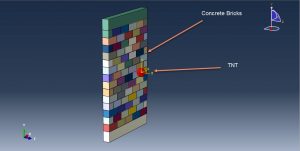
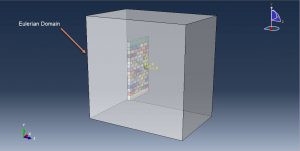
The primary aim of this work is to obtain a reliable numerical model of a masonry wall which reflects the behavior of a real structure subjected to CEL explosion.The damage parameter for masonry wall is the another crucial factor in this simulation. To model concrete blocks behavior under the high strain rate.Johnson-Holmquist model is used. The JWL equation of state to model TNT behavior is implied. Dynamic explicit procedure with general contact are used. To model mortar behavior in interaction,the cohesive property as cohesive,damage with evolution and tangential friction is used. This property is assigned to the contact surfaces of blocks.The proper boundary condition is applied to the bottom concrete beam.In this tutorial volume fraction method to define TNT location and TNT amount is used. The fine mesh has a good effect on the output results.
After the simulation damage variable for bricks,stress,TNT wave and pressure…..is achievable.You can see some figures of the result at below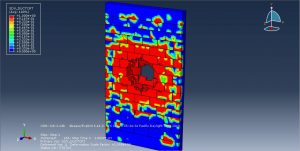
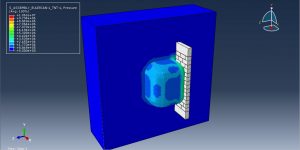
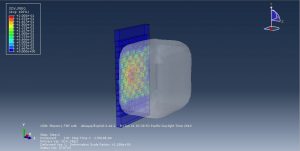
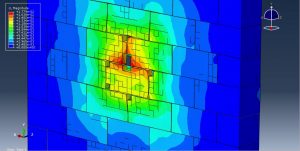
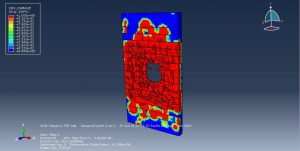
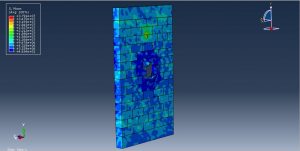
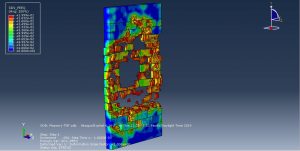
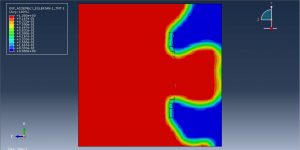
You can provide CAE ,INP,and English video files of this simulation here. The cost of these files is Thirty-One Euros. you can click on the bellow bottom to beginning process
You can purchase the tutorial through a PayPal account, a Visa, or a Master card, just before payment,send me an email to this address: karampourp@gmail.com
 Abaqus tutorials Abaqus tutorials
Abaqus tutorials Abaqus tutorials
